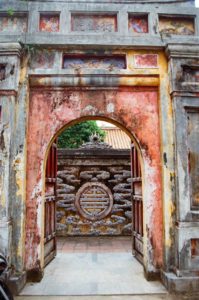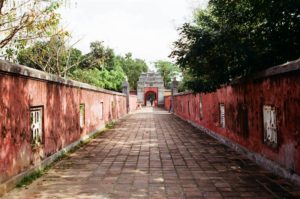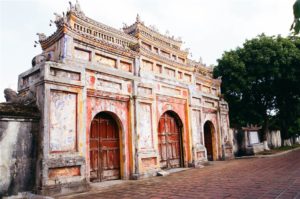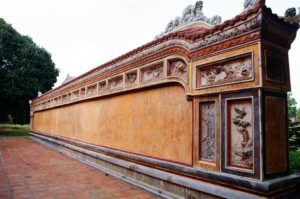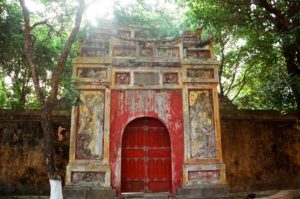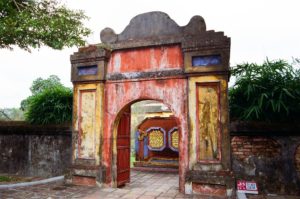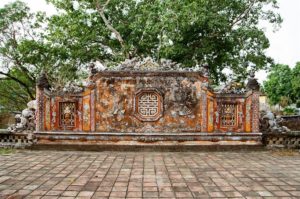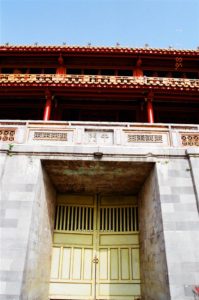Old-Time Vietnam – The Imperial Enclosure and Its Beautiful Gates
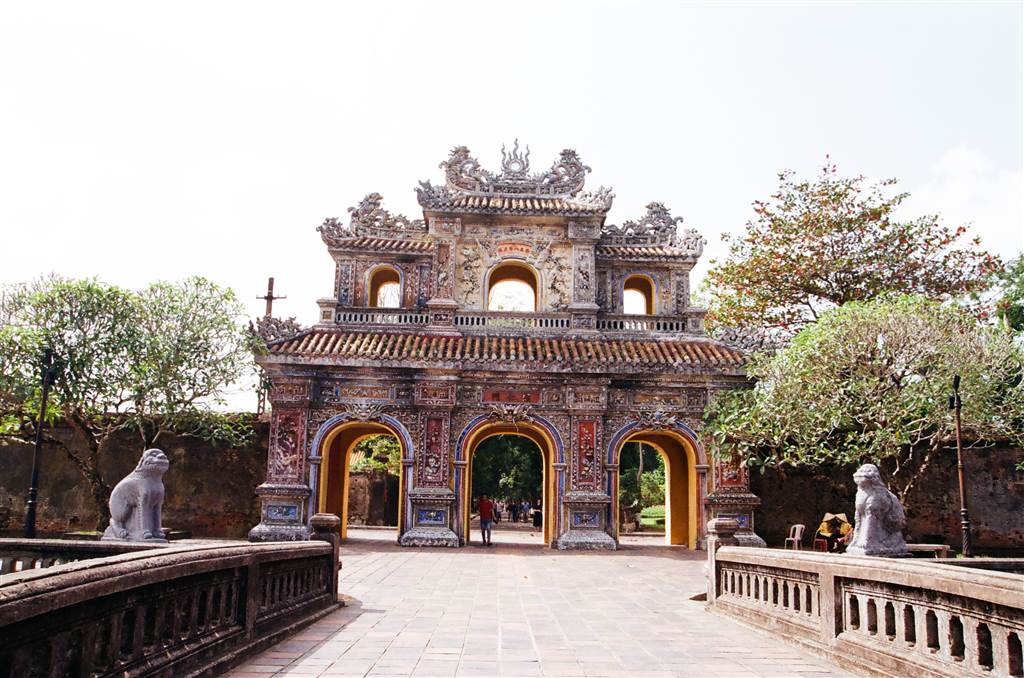
Perhaps throughout this tour I was most impressed by every gate that marked the entrances to the structures of the Imperial Enclosure. It seemed to me that protective walls surrounded every quarter and there would be a gate in the northern and southern entrances. This feature showed a rigorous system that perhaps only the Emperor was entitled to. The gates were beautifully constructed, even for the unrestored ones. It only takes a little imagination for one to visualise the Imperial Palace’s glory in the past.
The Noon Gate (Ngo Mon)
The South Gate, built in the form of a tower (Nam Khuyet), of the Imperial Enclosure was the predecessor to the now Noon Gate. Construction for the South Gate completed under the reign of Emperor Gia Long. On its eastern entrance lied the office for civilian affairs, and at the western entrance lied the office for military affairs. The platform of the Southern Gate was rectangular in shape.
Emperor Nguyen Thanh To (Minh Mang) ordered the construction of the Noon Gate, and the construction completed during the 14th year of his reign in 1833. The left (eastern) end turned into the Emperor’s Court for civilian affairs, and the right (western) end became the Emperor’s Court for military affairs. The whole structure is in a U shape. The beautiful Ngu Phung Pavilion (the Pavilion of the Five Phoenixes) stands atop its stone-and-brick foundation, overlooking the Flag Tower in its opposite.
As with all other gates in Vietnam, only the Emperor may enter through the central entrance. The smaller gates on the two sides were for the civilian and military mandarins. This practice has remained so today, meaning that all of the central gates of imperial structures are shut. For there is no longer an Emperor to speak of for Vietnam.
Besides the central entrance and the two side gates, there are two openings in the wings. These were for the commoners.
The Nguyen Emperors used to watch important ceremonies held before them at the Pavilion. Indeed, observers will not miss the apparent Chinese influence on the Noon Gate of Hue. At the Forbidden City of Beijing, the Noon Gate also served the purpose of Imperial observance of important events during the Ming and Qing Dynasties. It also shows a U shape. The Nguyen Dynasty did maintain diplomatic relations with the Qing Dynasty in those times.
The Noon Gate is the witness to the rise and fall of the Nguyen Dynasty. Since its construction completed in Minh Mang’s Reign, which, arguably, was a glorious page in the Nguyen Dynasty’s history, the Noon Gate withstood all the traumas that Vietnam experienced during the late 19th and throughout the 20th centuries. Its historical role came to an end when the Last Emperor of Vietnam, Bao Dai, held the abdication ceremony on August 30th, 1945. As he handed over the Great Seal and the Great Sword over to the representatives of the Democratic Republic of Vietnam, Tran Huy Lieu, Nguyen Luong Bang and Cu Huy Can, the Noon Gate officially became the last chapter of the Nguyen Dynasty.
When I stood before the Noon Gate in Hue in 2020, I was awed by its grandeur and authority. A year later, as I prepare this entry in the quiet of my study, I experienced quite a journey again by walking through its history. Its first impression upon me was similar to the complicated feelings I had at the Noon Gate of Beijing, where a whole bygone era shows through in one broad view, manifested in a grand structure standing ever so proudly, though with its stories buried in time.
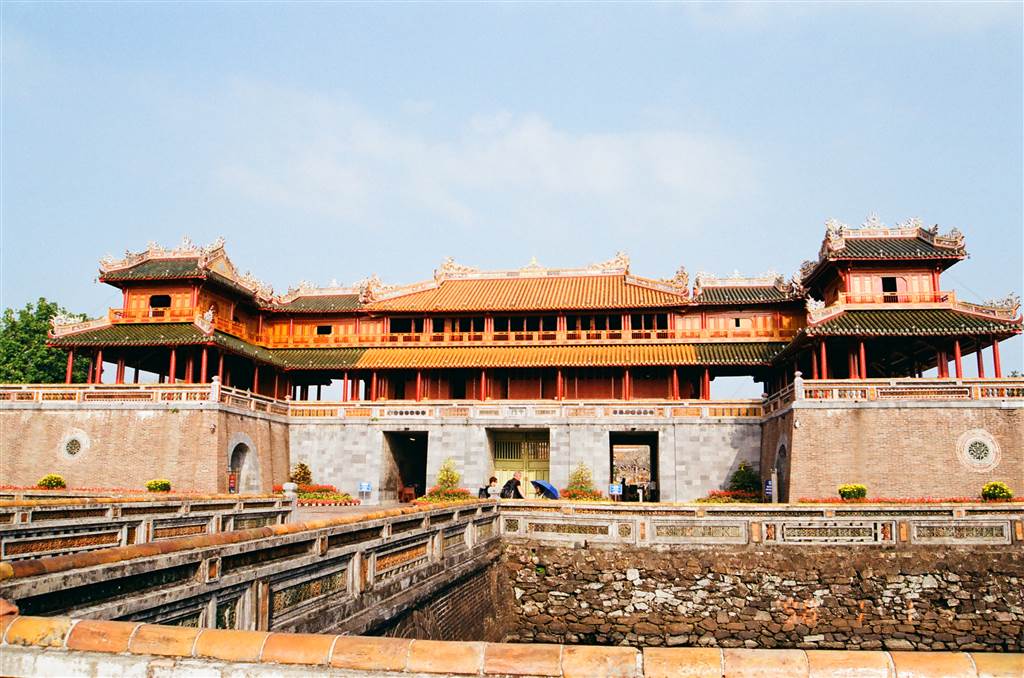
The Imperial City Gates on the East and the West
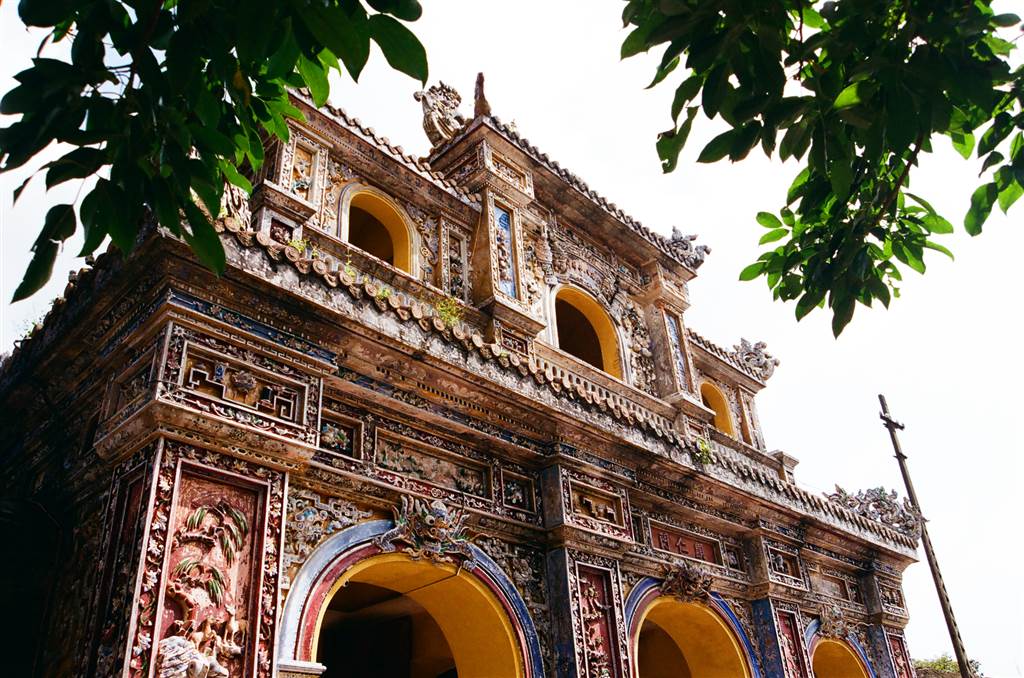
The Cua Hien Nhon lies at the south of the Citadel’s eastern gate. As such it serves as the eastern exit of the Imperial Palace. It is a structure of stones with two storeys. The lower level comes with three arched gateways. The upper level shows an additional three arches. The gate is covered with yellow glazed tiles, with tile carvings of fire pillars, and sunny skies. Relief in celadon and colored glaze adorn the sides of the arches.
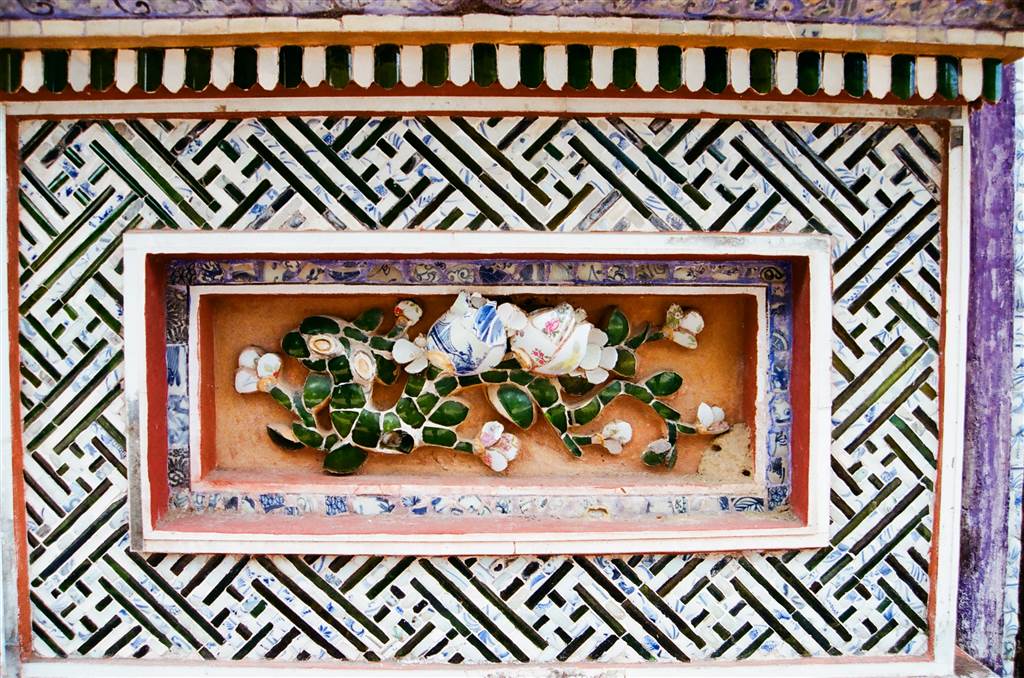
The Cua Chuong Duc lies at the south of the Citadel’s western gate and as such it serves as the western exit of the Imperial Palace. It has a similar structure and design as the Cua Hien Nhon. The structure shows that it was built during the 6th year of the Khai Dinh Reign.
There are a total of 11 such gates guarding the proper exits of the Imperial Palace. They are four in the south / southeastern exits, three on the east / northeastern exits, two on the west and southwestern exits, and two on the north / northwestern exits.

The Dong Kuyet Dai
The Dong Kuyet Dai was a structure from the earlier days, during the reign of Gia Long Emperor. It used to serve as a watchtower with a square plan, sitting outside of the eastern exit (Cua Hien Nhon) for observation and defence. It is now a business venture with a garden café bistro and a gallery of arts and crafts.
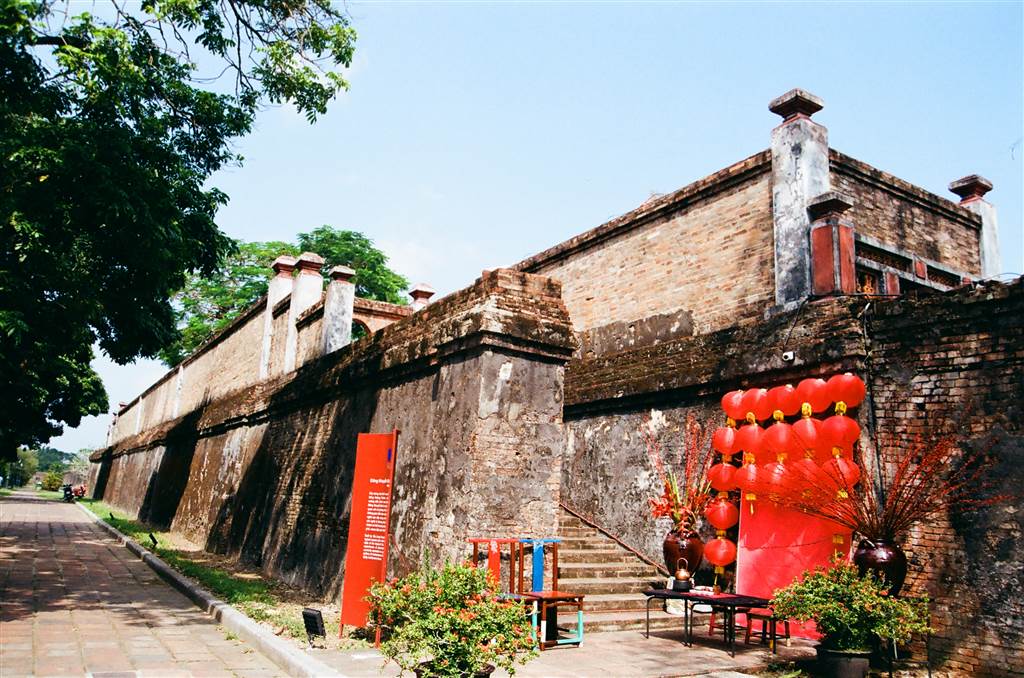
The Mieu Mon Temple Gate
The Mieu Mon guards the southern entrance of the The Temple. As a temple gate it is much less elaborate than the eastern and western exits of the Imperial Palace. It has three arched doors. Reliefs of glazed tiles adorn the sides of the doors and also the section above the arches.
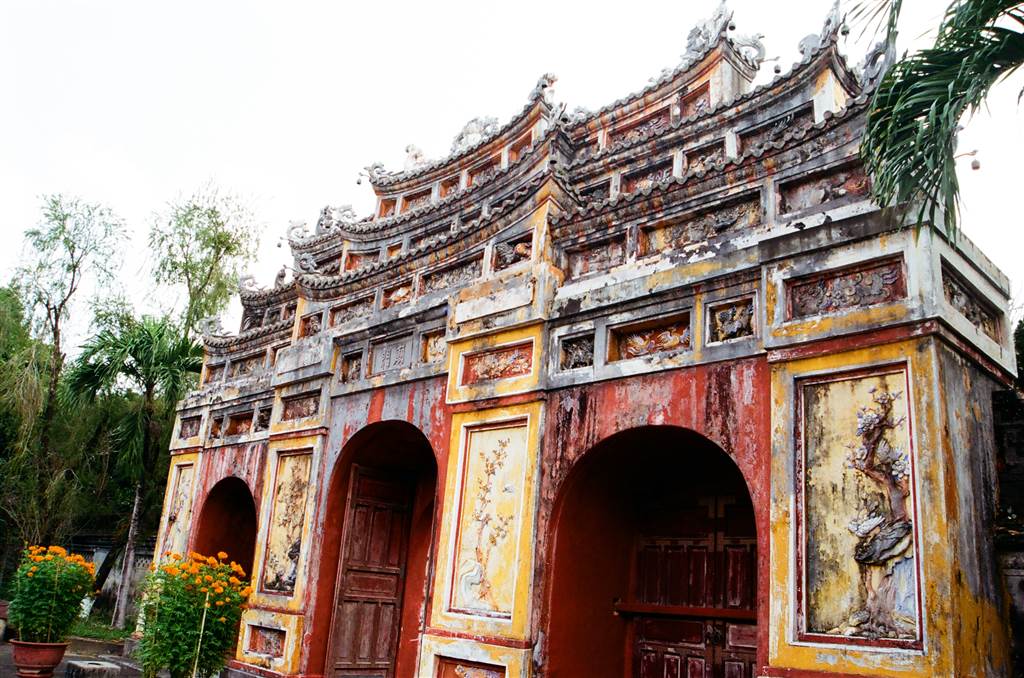
The Truong An Mon
The Truong An Men guards the entry into the Cung Truong Sanh compound, which was home to the Queen Mother. The theme of this gate, therefore, is longevity. The Chinese wordings on the gate mean “heavenly blessings” and “long-living.” The name of the gate itself, Truong An, means “eternal peace.” The arches have protruding pillars on their sides with reliefs of glazed tiles on each side.

A Recent Discovery of Mysterious Gates
Finally, speaking of gates, there has been a recent discovery of two mysterious gates in the vicinity of the Citadel. Slums sprang up within the Imperial City in the decades following 1945. When the residents vacated their homes for redevelopment in 2018, the gates revealed themselves. One is on the left side of the Luong Y Bridge, the other is on its right.
There is a theory that the two gates served defensive purposes. Their respective positions in Thuy Quan enabled guards to watch the boats passing from Dong Ba River to Ngu Ha River.
The gates were only wide enough for one person’s entry at one time. The mysteriousness comes from the fact that there is no mention of these two gates on any of the official records. Thus came the more interesting hypothesis: these were intended to serve as escape routes for the royalty.
Gallery: The Gates and Decorative Walls of the Imperial Palace, Hue
Sources
Historical descriptions on site.
The Lonely Planet on Vietnam.
Hue Noon Gate, Thua Thien Hue Portal.
The Wikipedia on the Meridian Gate (Hue).
The Wikipedia on The Hue Imperial City (Chin).
Vietnam’s Imperial City of Hue (II), at http://blog.udn.com/gloomybear/89948934
Vo Thanh, Hue Imperial Citadel Reveals New Gates, VN Express, June 29, 2020.

